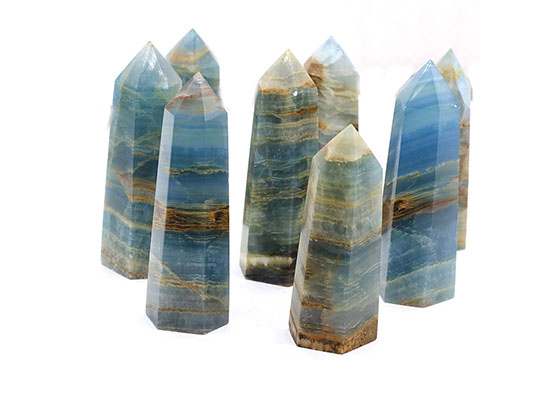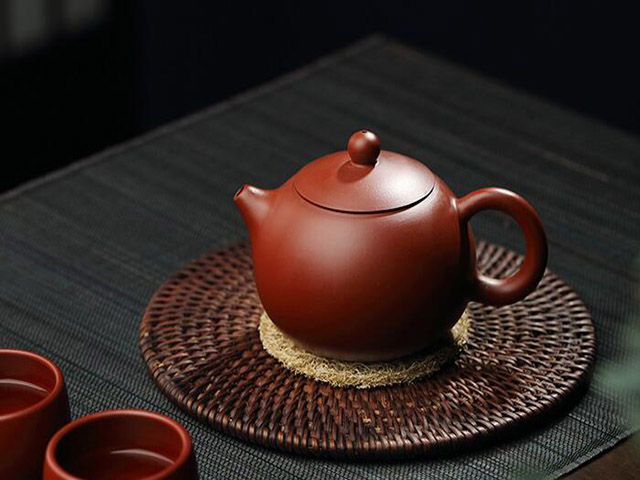Gemstones have been admired for centuries not only for their beauty but also for their spiritual and healing properties. Two popular gemstones that often get compared are larimar and turquoise. Both stones have their own unique characteristics and benefits, making them a popular choice for jewelry and adornment. In this blog post, we will take a closer look at the differences and similarities between larimar and turquoise.
Introduction
Larimar and turquoise are both well-known gemstones that are commonly used in jewelry. Larimar is a blue variety of the mineral pectolite and is found only in the Dominican Republic, while turquoise is a blue-green mineral that is commonly found in several locations worldwide. Both gemstones are popular because of their beautiful color and unique characteristics.
Origin and History
Larimar
Larimar was first discovered in 1916 but wasn’t commercially mined until the 1970s. It is found only in the Dominican Republic, specifically in the mountainous province of Barahona. The stone was named “Larimar” after the daughter of the man who rediscovered it in 1974, Miguel Mendez. Larimar has been used for jewelry making since the 1970s, but its spiritual and healing properties were only recently discovered.
Turquoise
Turquoise has been used for thousands of years and has a rich history. It was first used by the ancient Egyptians as early as 5500 BCE, and it was also used extensively by Native American tribes for jewelry and adornment. The name turquoise comes from the French word “turquois” which means Turkish, as it was originally brought to Europe through Turkey. Today, turquoise is mined in several locations worldwide, including the United States, Iran, and China.
Physical Characteristics
Color and Variations
Larimar is a blue stone with white or light-blue marbling, giving it a unique and distinctive look. The blue color can vary from a pale blue to a deep blue-green. Turquoise is a blue-green stone that can range in color from a light blue to a dark green, depending on the location where it was mined.
Hardness and Durability
Larimar has a hardness of 4.5 to 5 on the Mohs scale, which means it is relatively soft and can be scratched easily. Turquoise has a hardness of 5 to 6, making it slightly harder and more durable than larimar.
Transparency and Luster
Larimar is typically opaque, but some high-quality stones may have a translucent quality. The stone has a vitreous luster, which gives it a glossy, glass-like appearance. Turquoise can be opaque or translucent, and it has a waxy or dull luster.
Spiritual and Healing Properties
Beliefs and Cultural Significance
Larimar is believed to have spiritual and healing properties. It is said to promote relaxation and calmness and is often associated with the throat chakra. Larimar is also believed to help with communication and self-expression, making it a popular stone for those in the creative arts.
Turquoise also has spiritual and cultural significance. It is said to promote balance, protection, and good fortune. It is often used in Native American jewelry and is believed to have a connection to the sky and the earth.
Healing Properties and Benefits
Larimar is believed to have several healing properties, including reducing stress and anxiety, promoting relaxation, and helping with thyroid disorders. Turquoise is also believed to have healing properties and has been used for centuries for its ability to alleviate pain and inflammation, as well as promote emotional healing.
Uses and Jewelry
Popular Uses of Larimar and Turquoise
Larimar is primarily used for jewelry making and is often set in silver to complement its blue and white coloration. The stone is also sometimes used for decorative objects such as sculptures and vases.
Turquoise is also popular for jewelry making and is often set in silver or gold. It is used in a variety of jewelry styles, including Native American, bohemian, and modern styles. Turquoise is also used for decorative objects such as bowls, boxes, and sculptures.
Comparison of the Two Stones in Jewelry
Larimar and turquoise are both beautiful stones that can be used in a variety of jewelry styles. While they may be similar in color, they have distinct differences in their patterns and variations. Larimar’s white and blue marbling gives it a unique look, while turquoise’s green and blue variations give it a distinct character. Additionally, larimar is often found in larger pieces than turquoise, making it ideal for statement pieces.
Price and Availability
Factors Affecting the Price of Larimar and Turquoise
The price of larimar and turquoise can vary depending on several factors, including the quality of the stone, the size, and the location of the mine. High-quality stones with intense coloration and few inclusions will be more expensive. Additionally, larimar is only found in the Dominican Republic, which can make it more expensive to obtain.
Availability and Sources of These Stones
Larimar is found exclusively in the Dominican Republic, making it rarer and more expensive than turquoise, which is found in several locations worldwide. Turquoise is mined in several countries, including the United States, China, and Iran. The availability of turquoise varies depending on the location and the quality of the stone.
Care and Maintenance
Tips for Proper Care and Maintenance of Larimar and Turquoise
Both larimar and turquoise require proper care and maintenance to ensure their longevity. It is important to avoid exposing the stones to harsh chemicals and to avoid wearing them while swimming or bathing. Both stones can be cleaned with a soft, damp cloth and should be stored in a dry place away from direct sunlight.
Related:
Real vs. Fake Larimar: How to Identify and Appreciate Authenticity
Conclusion
Larimar and turquoise are two popular gemstones that are often compared. While they may share some similarities, they have distinct differences in their origin, physical characteristics, and spiritual properties. Both stones have unique beauty and can be used in a variety of jewelry styles. Whether you prefer the blue and white marbling of larimar or the green and blue variations of turquoise, both stones are a beautiful addition to any jewelry collection.




